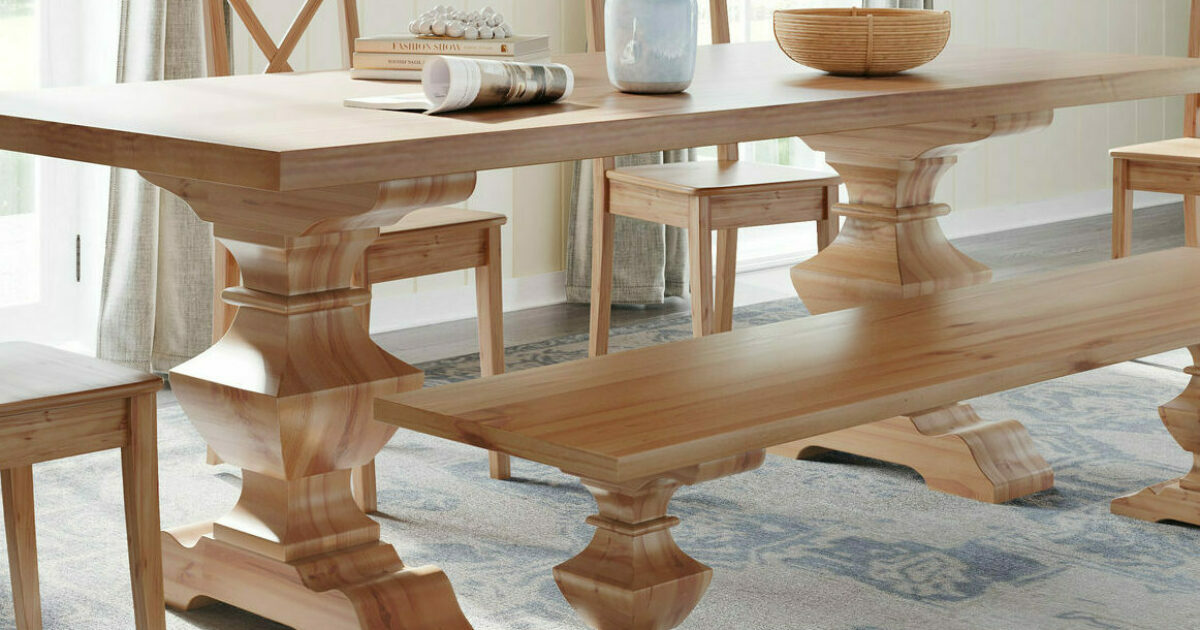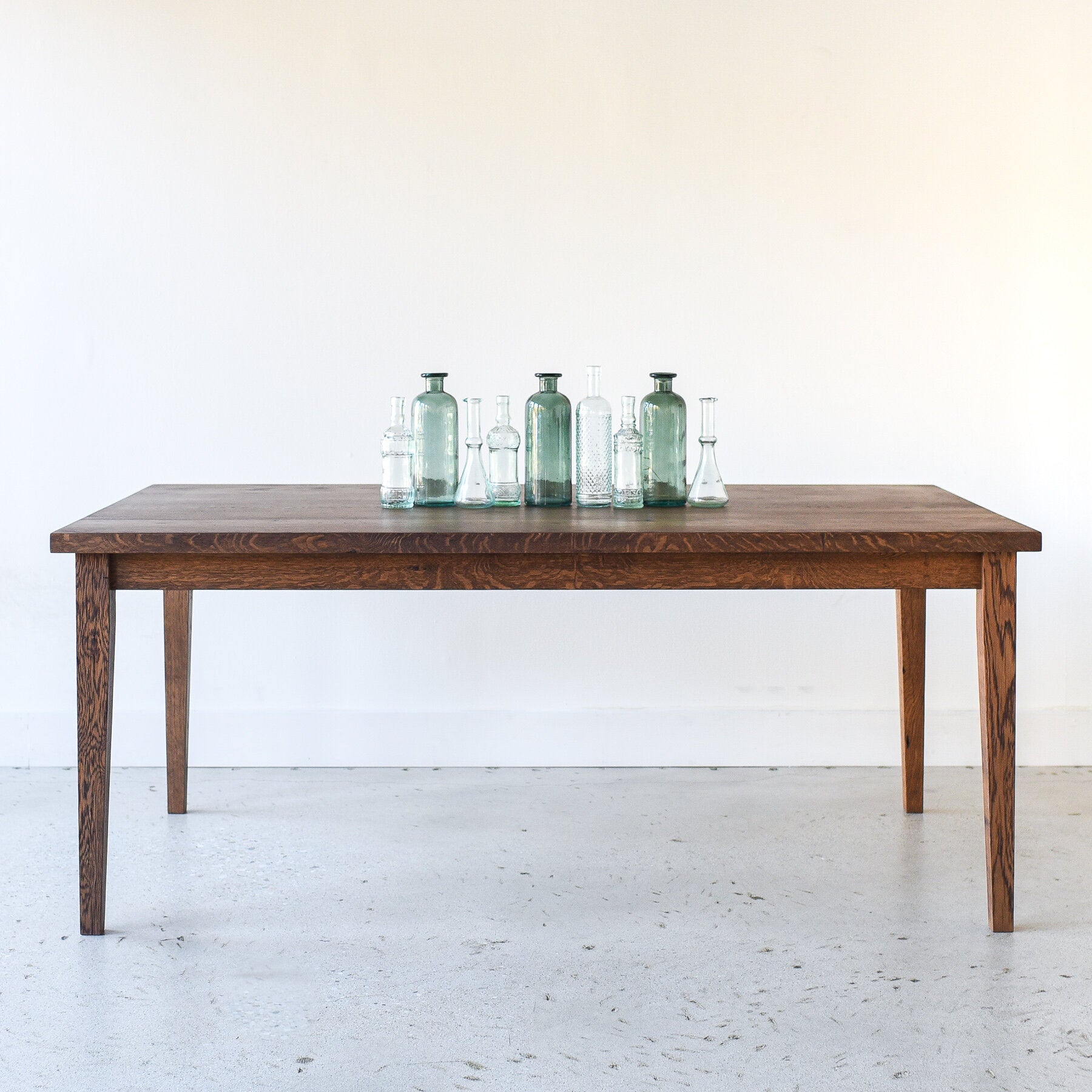Check Out Versatile Styles for Personalized Dining Table Legs Wood Solutions
Check Out Versatile Styles for Personalized Dining Table Legs Wood Solutions
Blog Article
Crucial Considerations for Picking the Right Dining Table Legs Timber
Selecting the appropriate wood for eating table legs entails a nuanced understanding of various factors that influence both functionality and aesthetic appeal. The selection of wood type, varying from durable woods to extra fragile softwoods, plays a critical function in making sure longevity and security. Each of these elements can considerably influence the total experience of your eating area.
Value of Wood Type

Hardwoods, such as walnut, oak, and maple, are often preferred for their strength and resistance to wear. These sorts of timber supply a durable foundation that can endure everyday use, making them ideal for dining tables that experience frequent celebrations. In comparison, softer timbers like want may be more susceptible to scrapes and dents, which may not be suitable for high-traffic locations.
Additionally, the option of wood can additionally influence the simplicity of upkeep. Some timbers need regular oiling or securing to protect their appearance, while others might be more forgiving. Inevitably, choosing the suitable timber kind involves balancing aesthetic factors to consider with useful requirements, ensuring that the eating table legs not only look attractive yet additionally stand the examination of time.
Evaluating Stability and Toughness
When reviewing eating table legs, one need to take into consideration the stability and strength they provide to the total structure. The legs are critical in sustaining the tabletop and making certain the dining experience is satisfying and safe. A steady table is essential for protecting against tottering or tipping, which can lead to spills or mishaps during meals.
The selection of wood type significantly affects toughness. Hardwoods such as oak, maple, and walnut are normally more robust and long lasting than softwoods like want or fir. Additionally, the thickness and layout of the legs play a vital function; thicker legs or those with a tapered layout can use better support and security.

Aesthetic Considerations
While capability is critical, the visual appeal of table legs can not be forgotten, as they significantly affect the overall style and setting of the eating space. The option of timber, surface, and layout can boost or take away from the table's visual impact.

Coatings also play a vital role in looks. A natural surface can highlight the timber's intrinsic charm, while painted or discolored legs can present shade and personality right into the area. In addition, the proportion and scale of the legs about the tabletop and bordering furnishings must be thought about to make sure aesthetic equilibrium and cohesion.
Eventually, the eating table legs need to not just offer a functional purpose however likewise add to a natural and welcoming ambience, making them an essential factor to consider in the total design of the dining area.
Maintenance Requirements
To ensure longevity and preserve the beauty of wooden table legs, routine maintenance is necessary (Dining Table Legs Wood). Timber is an all-natural material that can be vulnerable to damage from dampness, warm, and use. As a result, developing a routine care plan will significantly boost the sturdiness of your helpful hints dining table legs.
Begin with normal dusting using a soft, lint-free cloth to get rid of dust and debris that can scratch the surface. For even more complete cleaning, use a light soap option and damp fabric, avoiding excess dampness that can permeate into the timber. It is suggested to use a top quality wood gloss or conditioner every few months to nurture the timber and maintain its gloss.
Deal with any kind of damages or scratches without delay with proper timber filler or touch-up pens to avoid more deterioration. By adhering to these upkeep requirements, you will not only protect the visual appeal of your wooden eating table legs yet also prolong their functional life-span.
Budget and Cost Aspects
Budget plan and price variables regularly play an important function in the decision-making procedure for choosing wood eating table legs. When examining alternatives, it is essential to establish a clear budget that aligns with your general furnishings financial investment. The expense of wooden table legs can vary significantly based on the kind of layout, timber, and craftsmanship intricacy.
Hardwoods such as walnut, cherry, and oak normally regulate higher prices as a result of their longevity and aesthetic charm. On the other hand, softer timbers like ache may my link be much more economical but could not offer the same long life. Furthermore, custom or artisan-crafted legs can sustain additional prices, showing the skill and time purchased their production.
It is likewise essential to consider the possible long-term worth of your investment. While going with lower-cost products might appear economically prudent originally, they may require even more frequent substitute or repair work, inevitably enhancing overall expense.
For that reason, stabilizing high quality and price is vital. Prioritize products that satisfy your aesthetic choices while ensuring they fit easily within your budget, enabling you to develop a dining location that is both aesthetically appealing and practical.
Conclusion
To conclude, picking the suitable timber for dining table legs demands careful factor to consider of numerous elements, consisting of timber type, stability, aesthetic appeals, upkeep, and budget. Hardwoods such as oak and walnut supply superior sturdiness and toughness, while design and density contribute to general stability. Aesthetic allure and upkeep demands should align with specific choices and lifestyle. Eventually, an educated choice will certainly enhance the durability and aesthetic charm of the table, ensuring complete satisfaction and performance for several years ahead.
Picking the appropriate kind of wood for dining table legs is essential for both aesthetic appeal and architectural honesty. Eventually, choosing the suitable wood kind entails stabilizing aesthetic factors to consider with sensible needs, her comment is here making sure that the dining table legs not only look appealing yet likewise stand the examination of time.
It is recommended to apply a premium timber polish or conditioner every few months to nurture the timber and maintain its luster.
The price of wooden dining table legs can differ considerably based on the type of layout, craftsmanship, and timber complexity.
In final thought, choosing the appropriate timber for dining table legs requires careful factor to consider of different factors, consisting of wood kind, stability, visual appeals, upkeep, and budget.
Report this page